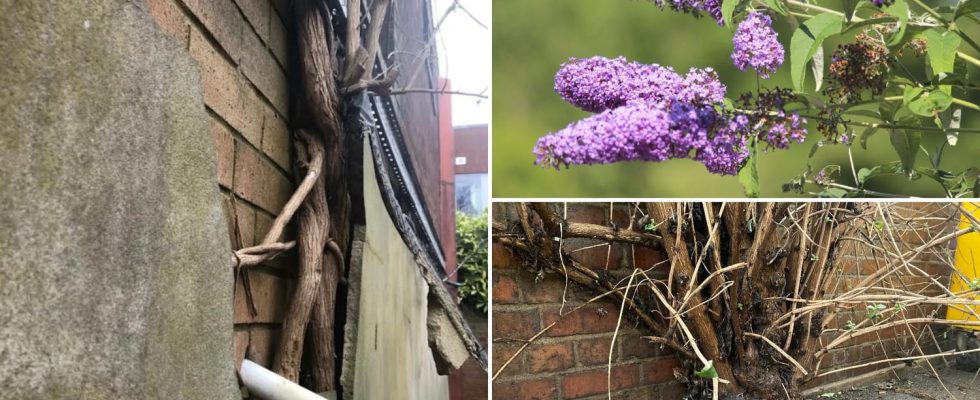If you have this plant in your garden, beware. It spreads very quickly thanks to its thousands of seeds and settles in buildings. In a few years, its roots have destroyed a roof or even a wall.
Buddleia davidii – or ‘butterfly tree’ – was widely planted in home gardens after being introduced from China because it is ideal for attracting insects. It was sold in many garden centers. Buthe Buddleia is an invasive species due to its ability to spread by seed, which can germinate in difficult locations and under inhospitable conditions. It is this ability to germinate easily that is why buddleia is often seen growing on the sides of buildings and other structures.
Nine times out of ten, if you look up at a building and see a plant growing from the brickwork or chimney, it’s buddleia. But it doesn’t stop there, once established in a building wall or roof, the plant sends up fibrous roots and can cause significant damage to buildings as it grows.
The Buddleia is incredibly prolific at producing its own seeds – it is estimated that a single buddleia flower can produce over 40,000 seeds. Consequence: the requests for the elimination of the buddleia increase from year to year, with more and more owners worried about the development of this plant.
“We have seen buildings torn apart by Buddleia, and railway arches frequently become the victims of Buddleia. More often than not, eradication will entail extensive demolition and reconstruction of walls and roofs damaged by the plant,” say specialists. in eradication.
Indeed, theBuddleia roots penetrate deep into structures, making them difficult to remove. Herbicide applications may seem the simplest, but don’t work as well on older plants and are only likely to be completely effective if a treatment is carried out over several years.
The Buddleia has been planted in recent years because it is attractive to insects and is often recommended for encouraging wildlife in gardens. If you have them in your home, an easy way to prevent buddleia from spreading is to cut the flowers before they set seed. Ideally, dry the cuttings quickly and compost them in a sealed bag. The Buddleia can be pruned every year and this will limit the size of the plant and the number of flowers.


